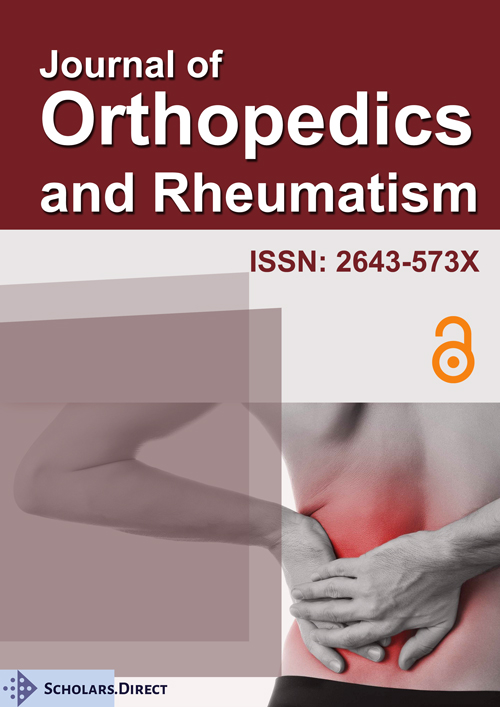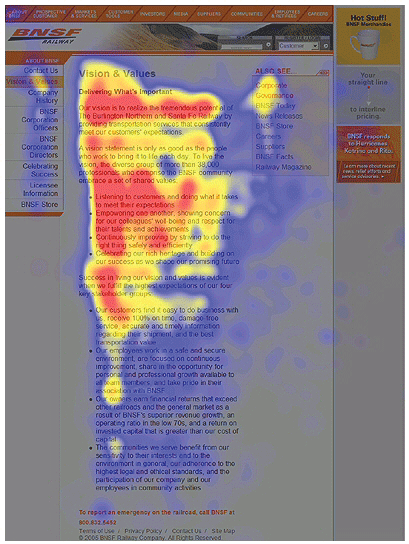A Guide to Writing eHealth Websites with Orthopaedics as an Example - Readability, Reliability, Usability
Summary
The leading source of information in our modern era is the internet, but there is no assurance that all the material available is reliable or even comprehensible to the general population. There must be guidelines for the effective creation of eHealth websites which have the aim of patient education. Using the example of Orthopaedics, this piece aims to be a guide to medical staff for the effective delivery of health information to the public. The goals of readability, reliability and usability are key in allowing us to augment the process of patients making well-informed decisions.
Keywords
Health communication, Health education, Internet, Delivery of health care, Medical informatics, Orthopaedics
The Internet has become the foremost tool for patients seeking information relating to surgery [1-3]. However, valid concerns have been raised about the readability of medical websites, the credibility of their content, and their usability [4]. Despite the exponential growth in medically themed webpages, there remains a lack of clear guidelines for writing comprehensible eHealth websites. This article seeks to provide an overview for best practice in writing websites for patient education, taking websites pertaining to Orthopaedics as an example.
A multi-national European study has demonstrated a significant increase in the number of people utilising the Internet for health purposes, with a continuous growth in this number amongst all ages and both genders [5]. According to the World Health Organisation, eHealth is defined as the use of information and communication technologies for health [6]. This includes electronic health resources, such as the internet and mobile phone applications. The advantages of the Internet and E-learning over more traditional means of learning are numerous. The ubiquitous nature of the Internet helps overcome the problems of distance, such as in the rural setting or with immobility. The convenience and immediacy of online information provides huge benefit. E-learning is still in its infancy, with a pressing need for us to understand both how patients use the Internet, and how to evaluate the quality of the information retrieved. There is a significant lack of easy-to-understand, trustworthy patient information available on the Internet [7,8].
Readability
The recommendation for optimal patient readability is to provide information at a level of grade 6 or lower [9]. The average adult from the United States reads at a level of grade 8; however, grade 6 readability is aimed for in medical literature so that a larger proportion of the patient population and their carers can understand the health information [10]. Additionally, those with lower health literacy are more likely to have associated poor health status; so targeting these 'at risk' groups is imperative [11]. It is possible to write at a grade 6 level by following the instructions for readability in Table 1. The Flesch-Kincaid grade formula [12], which assesses English comprehension difficulty based on word length and sentence length, can assess the grade level of text and is a function that can be found through Microsoft Word.
Although there are factual orthopaedic information sites available, such as that provided by the American Academy of Orthopaedic Surgeons (AAOS) (http://aaos.org), the information has been criticised for being written in language too difficult to understand. Using the Flesch-Kincaid grade formula, it was deduced that only 2% of the articles from the AAOS website that were aimed at patients were of the recommended grade level 6 or lower reading standard. Thus, a large proportion of the population would have difficulty interpreting the majority of the information presented on the website [13]. Another recent study considered materials intended for patients found from multiple adult joint reconstruction websites including the AAOS website, the American Association of Hip and Knee Surgeons (AAHKS) (http://www.aahks.org), and the Arthritis Foundation (http://www.arthritis.org). Again, only 2% (5 articles) had a readability grade of 6 or lower [4]. It is reported that patients who require orthopaedic information mainly utilize Internet search engines to acquire this material [2,3], thus it is concerning that the literature present is not easily understood by many patients.
Reliability
Given the high variability of information found on the Internet, it is imperative that there is an objective measure of determining the quality of surgical content presented. The risk of patients being misled by erroneous information discovered online undermines the usefulness of the Internet as a patient education resource. Inaccurate information can result in potentially hazardous health behavior with patients having inappropriate treatment expectations [14]. In order to ensure that patients are receiving accurate and up to date information, the content needs to be substantiated [15]. One commonly used validated tool used by medical professionals for measuring quality of material found on the Internet is the DISCERN tool, which was developed by the University of Oxford's Division of Public Health and Primary Health Care [16]. According to the DISCERN tool, good quality online health information is determined largely by reliability and credibility, which are established from the content of the website [17]. This tool targets various aspects of a websites' content including the presence of aims, the relevance of information and the description of treatment choices. These areas are graded from 16 questions, which can be rated from one to five. The resultant score gives an idea as to the merit of the site [18]. Additionally, the Quality Scale (QS) and Information Quality Tool (IQT) are other ways of evaluating credibility of various websites [15]. They use items such as authorship, source and navigatability and create a score for the website that can then be used as an objective comparator to other website's scores. Scoring systems such as these, if reported on websites, can be used by readers to evaluate the reliability of the website they are reading. Other ways of improving credibility of websites and patient's trust in them is including complete details of the writers on the website, such as qualification, experience and institute of employment, as well as including links to external websites for further information on various topics [2]. This can be seen on the Australian Orthopaedic Association (AOA) website [19], which lists links to the patient education library on the AAOS website as well as orthoanswer - two extensive collections of information for patients on numerous orthopaedic procedures and conditions.
Usability
In addition to both the credibility of surgically related information and language level used on eHealth sites, further important factors include website layout and presentation. Visitors tend to access eHealth websites for a more functional rather than pleasurable purpose. This is revealed by the fact that readers are likely to swiftly scan through information, as opposed to reading each word. Nielson performed an eye tracking study with over 200 participants examining the ways in which users scan websites, which found that the F-shape pattern was the most dominant reading pattern, whereby most attention is given to the first screen viewable, and to the left of the screen [20]. Figure 1 demonstrates the F-shaped pattern that reader's eyes follow when scanning websites - the red represents the most viewed areas, whilst the blue represents the least viewed areas. Thus, strategic placement of material on the website is vital. Sites need to have information that is findable, easily scannable, readable, concise and accessible (Table 1). Table 1 describes these features of websites that make them more user-friendly. It is futile having a well-substantiated and informative website aimed at the public, when the information on the page is difficult to locate [21].
The AOA has incorporated a patient information portal (www.orthoanswer.org) in order to provide authoritative easy-to-read patient information [22]. The site content of Orthoanswer is designed to be contemporary and relevant to patients, covering all aspects of the medical experience, from diagnosis through to post-treatment rehabilitation and follow-up; all of which is both relevant to the patient and easy to comprehend (the text was written at a grade 5-6 English reading standard). The site aims to augment the informed consent process for orthopaedic procedures, but not replace it. Furthermore, an effort is being made to create colourful visual information displayed as drawings and illustrations. This aids in patient interpretation of medical concepts and procedures [23]. Informed and empowered patients result in greater health outcomes [24].
Currently, there are a multitude of websites claiming valid information. However, there is no standardising body regulating the quality of health-related information on the Internet. Therefore, surgeons, medical staff and the peak bodies in health such as the Royal Australasian College of Surgeons and the surgical speciality associations should provide online information that is not only accurate, but also comprehensible to the wider public.
References
- Weil A, Bojanowski M, Jamart J, et al. (2012) Evaluation of the quality of information on the internet available to patients undergoing cervical spine surgery. World Neurosurg 1878-8750.
- Krempec J, Hall J, Biermann JS (2003) Internet use by patients in orthopaedic surgery. Iowa Orthop J 23: 80-82.
- Fraval A, Ming Chong Y, Holcdorf D, et al. (2012) Internet use by orthopaedic outpatients - current trends and practices. Australas Med J 5: 633-638.
- Polishchuk DL, Hashem J, Sabharwal S (2012) Readability of online patient education materials on adult reconstruction web sites. J Arthroplasty 27: 716-719.
- Kummervold PE, Chronaki CE, Lausen B, et al. (2008) eHealth trends in Europe 2005-2007: A population-based survey. J Med Internet Res 10: e42.
- http://www.who.int/ehealth/en/
- Rennie C, Hannan S, Maycock N, et al. (2007) Age-related macular degeneration: What do patients find on the internet? J R Soc Med 100: 473-477.
- Donnelly L, Shaw R, Akker O (2008) eHealth as a challenge to 'expert' power: A focus group study of internet use for health information and management. J R Soc Med 101: 501-506.
- (2013) How to write easy to read health materials. National Institutes of Health. MedlinePlus.
- Cotugna N, Vickery CE, Carpenter-Haefele KM (2005) Evaluation of literacy level of patient education pages in health related journals. J Community Health 30: 213-219.
- Baker D, Parker R, Williams M, et al. (1997) The relationship of patient reading ability to self-reported health and use of health services. Am J Public Health 87: 1027-1030.
- Flesch R (1948) A new readability yardstick. J Appl Psychol 32: 221-233.
- Sabharwal S, Badarudeen S, Kunju SU (2008) Readability of online patient education materials from the AAOS web site. Clin Orthop Relat Res 466: 1245-1250.
- Hanif F, Read JC, Goodacre JA, et al. (2009) The role of quality tools in assessing reliability of the internet for health information. Inform Health Soc Care 34: 231-243.
- Ademiluyi G, Rees CE, Sheard CE (2003) Evaluating the reliability and validity of three tools to assess the quality of health information on the internet. Patient Educ Couns 50: 151-155.
- Charnock D, Shepperd S, Needham G, et al. (1999) DISCERN: An instrument for judging the quality of written consumer health information on treatment choices. J Epidemiol Community Health 53: 105-111.
- Charnock D, Shepperd S (2004) Learning to DISCERN online: Applying an appraisal tool to health websites in a workshop setting. Health Educ Res 19: 440-446.
- Chong YM, Fraval A, Chandrananth J, et al. (2013) Assessment of the quality of web-based information on bunions. Foot Ankle Int 34: 1134-1139.
- https://www.aoa.org.au/for-patients/procedure-information
- http://www.useit.com/alertbox/reading_pattern.html
- Alexander D (2010) Writing for the web: useful, useable, accessible - web content that works! v5.4, [internet] Melbourne, Dey Alexander Consulting.
- www.orthoanswer.org
- Walsh TM, Volsko TA (2008) Readability assessment of internet-based consumer health information. Respir Care 53: 1310-1315.
- Camerini L, Shulz PJ, Nakamoto K (2012) Differential effects of health knowledge and health empowerment over patients' self-management and health outcomes: A cross-sectional evaluation. Patient Educ Couns 89: 337-344.
Corresponding Author
Janan Chandrananth, MBBS, Western Health, 4/22 Scovell Crescent Maidstone, VIC 3012, Australia, Tel: 0433651362.
Copyright
© 2017 Chandrananth J, et al. This is an open-access article distributed under the terms of the Creative Commons Attribution License, which permits unrestricted use, distribution, and reproduction in any medium, provided the original author and source are credited.





